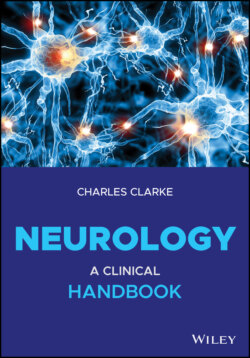Читать книгу Neurology - Charles H. Clarke - Страница 10
Оглавление
Foreword
As a medical specialty, neurology emerged in its modern guise in the second half of the nineteenth century, and it was then that the National Hospital at Queen Square opened its doors, the very first hospital in the world dedicated to neurological diseases. Since then, the stories of neurology and of the hospital have been intertwined. Throughout the twentieth and now the twenty‐first centuries, Queen Square as it has become known has maintained its position at the cutting edge of neurology and remains one of the leading neurological institutions globally, both in terms of superlative clinical care and research. As neurology developed, the Queen Square clinical method evolved, a method that remains the standard approach to the diagnosis and treatment of neurological conditions.
Embedded in a knowledge of the anatomy, physiology and mechanisms of disease, this clinical method has at its core the taking of a detailed history, the performance of a systematised clinical examination, the judicious choice of well‐focused investigation and a balanced approach to evidence‐based treatment. The diagnostic approach is successful because it is a logical exploration of symptoms aligned to the principles of nervous system structure and function. Investigations, notably neuroimaging, neurophysiology and molecular biology, have also evolved enormously and assist this process. In terms of treatment, the parallel developments of surgical and medical therapies, also rooted in the modern neurosciences, have changed neurology from being what was essentially a diagnostic specialty to a therapeutic one. Again, Queen Square has been at the forefront. Linked to the science has been an emphasis on ensuring that the medical process is patient centred and responsive to patient needs. In view of these spectacular advances, neurology today would be hardly recognisable to its practitioners of long ago, yet this approach throughout the world remains the cornerstone for diagnosis and treatment. It also forms the backdrop to this book.
With advancing knowledge has come increasing subspecialisation. This has undoubtedly advanced the science of neurology but has had the drawback of narrowing of scope of individual medical practice. One solution is to incorporate the subspecialties within an integrated framework, and this has been a guiding principle at the hospital as it has evolved. The success of the strategy was demonstrated in the textbook Neurology: A Queen Square Textbook, that Charles Clarke initiated and propelled with many others to its completion. The Textbook comprised 26 chapters with contributions from over 90 physicians and surgeons. This present book, Neurology: A Clinical Handbook, is based on the second edition of the Textbook. It is Charles Clarke’s distillation of practical knowledge and his wide experience. But it is more than this. This Handbook has the advantage of having been compiled and written by a single person, thus ensuring a seamless integration of knowledge from all the specialties. The result is a superb synopsis – a banner to herald our Textbook in its forthcoming Third Edition, edited by Robin Howard, Dimitri M. Kullman, David Werring and Michael Zandi.
Dr Charles Clarke is a senior neurologist who has maintained a wide‐ranging general neurological practice and combined this with a knowledge of the advancing practice in the major specialist fields. Charles comes from a distinguished medical lineage and has demonstrated his skills in the production of this handbook, a consummate guide to neurological diagnosis and treatment, useful, up to date and practical, and one in which specialty knowledge has been integrated into a single framework. He has been able to bring together a text that is strikingly well balanced and authoritative. This is a crowning achievement, made possible not least because of the elegance and clarity of his writing. In the world of modern medicine, the ability to communicate clearly and precisely without savaging the beauty of the English language is a rare gift and one bestowed on Charles for all our benefit.
In all, this Handbook is a sparkling addition to the neurological library, a concise and clear guide to clinical practice in neurology, written in elegant prose, a tribute to Queen Square and to the contribution that both Hospital and Institute have made to neurology. It is the encapsulation of wisdom gained in a long career. For practitioners in the art of neurology, junior and senior, this is required reading.
Simon Shorvon
National Hospital for Neurology & Neurosurgery, Queen Square, London
